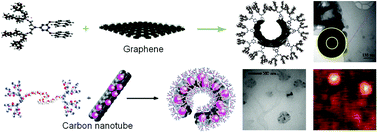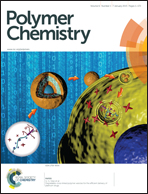Impact of dendritic polymers on nanomaterials
Abstract
For many years scientists have employed dendritic polymers (dendrimers and hyperbranched polymers) in association with other nanomaterials (such as graphene, carbon nanotubes, proteins and peptides, as well as metallic nanoparticles) to synthesize hybrid nanomaterials with improved biocompatibility, biodegradability, functionality, physicochemical properties and the capability of carrying other molecules. However, more recent studies demonstrate that one of the less noticed effects and newly observed facets of dendritic polymers is their role in changing the structure (shape, size and sheet multiplicity) of the obtained hybrid nanomaterials, upon covalent and noncovalent interactions. In this review, we intend to have a more specialized look at these reports and discuss the ‘whys’ and ‘hows’ of this phenomenon.


 Please wait while we load your content...
Please wait while we load your content...